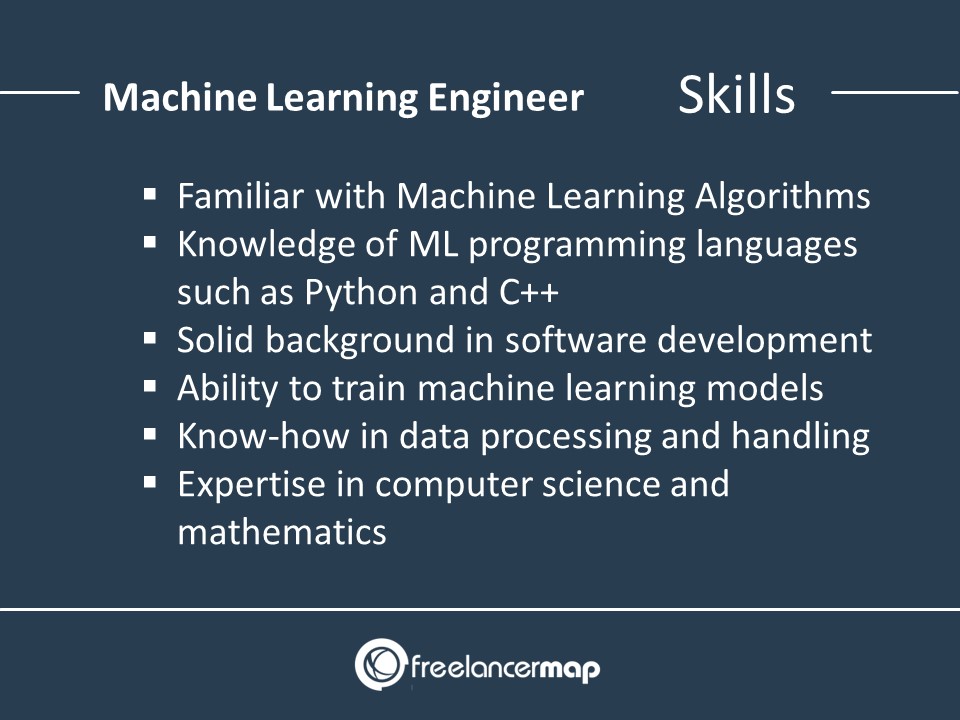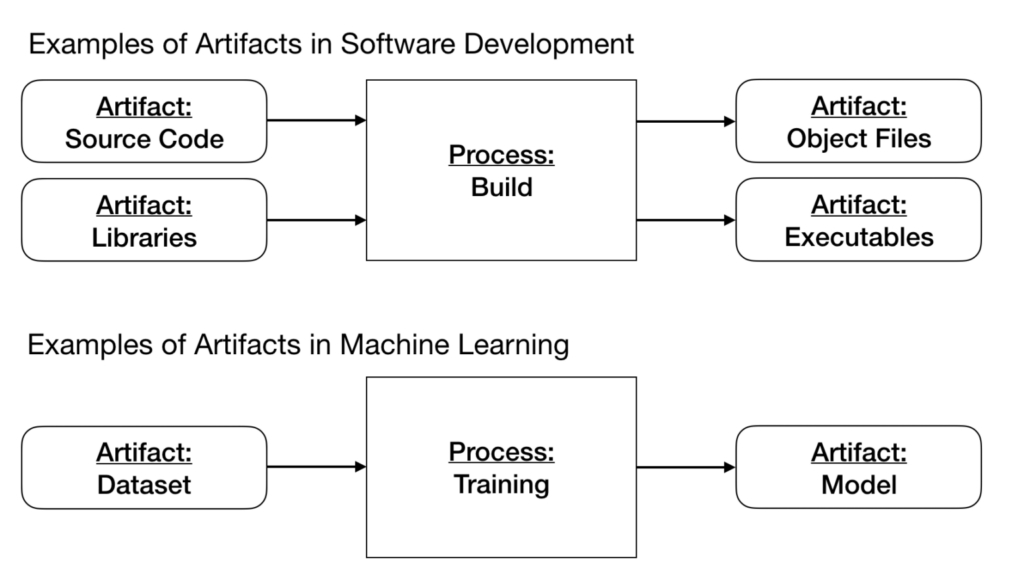All Categories
Featured
Table of Contents
- – The Basic Principles Of What Is The Best Route...
- – Get This Report on Machine Learning Online Cou...
- – The Basic Principles Of Software Engineering ...
- – Some Known Details About Computational Machin...
- – Top Guidelines Of 7-step Guide To Become A M...
- – The Buzz on Computational Machine Learning F...
- – The Definitive Guide for How I Went From Sof...
Some people think that that's cheating. Well, that's my whole profession. If somebody else did it, I'm mosting likely to utilize what that individual did. The lesson is putting that apart. I'm requiring myself to believe via the feasible solutions. It's more concerning consuming the web content and attempting to apply those concepts and less about discovering a library that does the work or finding somebody else that coded it.
Dig a little bit deeper in the mathematics at the beginning, simply so I can build that foundation. Santiago: Lastly, lesson number 7. I do not think that you have to comprehend the nuts and bolts of every formula before you utilize it.
I've been utilizing neural networks for the lengthiest time. I do have a feeling of how the gradient descent functions. I can not explain it to you right currently. I would certainly need to go and examine back to actually obtain a far better instinct. That doesn't indicate that I can not address points utilizing neural networks? (29:05) Santiago: Trying to compel people to think "Well, you're not mosting likely to achieve success unless you can explain every information of exactly how this works." It goes back to our sorting example I believe that's simply bullshit suggestions.
As a designer, I've dealt with numerous, numerous systems and I've made use of several, lots of points that I do not recognize the nuts and bolts of just how it functions, even though I comprehend the impact that they have. That's the final lesson on that thread. Alexey: The funny point is when I think of all these libraries like Scikit-Learn the formulas they use inside to implement, for instance, logistic regression or another thing, are not the same as the algorithms we study in artificial intelligence classes.
The Basic Principles Of What Is The Best Route Of Becoming An Ai Engineer?
So also if we tried to learn to obtain all these fundamentals of artificial intelligence, at the end, the algorithms that these libraries make use of are various. ? (30:22) Santiago: Yeah, definitely. I believe we require a lot more pragmatism in the market. Make a whole lot more of an effect. Or concentrating on delivering value and a little much less of purism.

By the method, there are 2 different courses. I usually speak with those that intend to operate in the sector that intend to have their influence there. There is a course for scientists which is completely different. I do not attempt to talk regarding that because I don't recognize.
But right there outside, in the industry, materialism goes a long way for certain. (32:13) Alexey: We had a remark that stated "Really feels more like motivational speech than speaking about transitioning." So maybe we ought to change. (32:40) Santiago: There you go, yeah. (32:48) Alexey: It is a great motivational speech.
Get This Report on Machine Learning Online Course - Applied Machine Learning
One of the points I wanted to ask you. Initially, allow's cover a couple of points. Alexey: Let's start with core devices and structures that you need to discover to actually shift.
I recognize Java. I know exactly how to utilize Git. Maybe I know Docker.
Santiago: Yeah, definitely. I assume, number one, you must start discovering a little bit of Python. Since you already recognize Java, I do not think it's going to be a substantial transition for you.
Not because Python is the very same as Java, however in a week, you're gon na obtain a lot of the distinctions there. You're gon na be able to make some progress. That's top. (33:47) Santiago: Then you obtain particular core tools that are going to be made use of throughout your whole profession.
The Basic Principles Of Software Engineering In The Age Of Ai
You get SciKit Learn for the collection of maker discovering algorithms. Those are tools that you're going to have to be making use of. I do not advise simply going and learning about them out of the blue.
Take one of those training courses that are going to begin presenting you to some issues and to some core ideas of equipment knowing. I don't keep in mind the name, but if you go to Kaggle, they have tutorials there for cost-free.
What's great regarding it is that the only demand for you is to recognize Python. They're mosting likely to offer an issue and inform you just how to utilize decision trees to solve that particular trouble. I believe that process is exceptionally powerful, since you go from no machine discovering history, to comprehending what the issue is and why you can not address it with what you recognize right now, which is straight software application engineering practices.
Some Known Details About Computational Machine Learning For Scientists & Engineers
On the other hand, ML designers focus on building and releasing equipment understanding designs. They concentrate on training models with data to make predictions or automate tasks. While there is overlap, AI engineers deal with even more diverse AI applications, while ML designers have a narrower emphasis on artificial intelligence formulas and their practical application.

Equipment discovering engineers concentrate on creating and deploying equipment discovering models right into production systems. On the other hand, information researchers have a broader role that consists of data collection, cleaning, expedition, and building versions.
As organizations progressively adopt AI and maker knowing technologies, the need for knowledgeable specialists expands. Artificial intelligence engineers work with innovative jobs, contribute to development, and have affordable salaries. Success in this field calls for constant understanding and keeping up with advancing innovations and techniques. Artificial intelligence roles are usually well-paid, with the potential for high gaining potential.
ML is basically different from conventional software program development as it concentrates on training computer systems to learn from information, rather than programs explicit regulations that are implemented systematically. Unpredictability of end results: You are probably utilized to creating code with predictable outcomes, whether your feature runs when or a thousand times. In ML, nonetheless, the end results are less particular.

Pre-training and fine-tuning: Exactly how these models are trained on vast datasets and afterwards fine-tuned for certain jobs. Applications of LLMs: Such as message generation, view evaluation and information search and access. Documents like "Interest is All You Need" by Vaswani et al., which introduced transformers. On-line tutorials and courses concentrating on NLP and transformers, such as the Hugging Face training course on transformers.
Top Guidelines Of 7-step Guide To Become A Machine Learning Engineer In ...
The capability to take care of codebases, merge changes, and deal with disputes is simply as vital in ML development as it remains in typical software tasks. The skills created in debugging and screening software applications are highly transferable. While the context might change from debugging application reasoning to identifying problems in information handling or version training the underlying principles of systematic investigation, hypothesis screening, and repetitive improvement coincide.
Equipment understanding, at its core, is heavily dependent on statistics and chance concept. These are essential for understanding just how formulas pick up from data, make predictions, and assess their performance. You should take into consideration ending up being comfortable with principles like analytical significance, circulations, hypothesis screening, and Bayesian thinking in order to style and analyze models successfully.
For those curious about LLMs, a detailed understanding of deep learning designs is valuable. This consists of not just the auto mechanics of neural networks but additionally the design of details versions for various usage situations, like CNNs (Convolutional Neural Networks) for image processing and RNNs (Frequent Neural Networks) and transformers for consecutive data and natural language handling.
You should recognize these issues and learn techniques for identifying, alleviating, and connecting about prejudice in ML versions. This includes the potential effect of automated choices and the ethical effects. Numerous designs, particularly LLMs, call for substantial computational sources that are typically given by cloud systems like AWS, Google Cloud, and Azure.
Structure these abilities will certainly not only facilitate a successful shift right into ML yet additionally guarantee that designers can contribute properly and properly to the development of this dynamic field. Concept is necessary, but absolutely nothing beats hands-on experience. Start dealing with projects that allow you to use what you have actually found out in a functional context.
Take part in competitions: Join platforms like Kaggle to take part in NLP competitions. Build your jobs: Begin with easy applications, such as a chatbot or a message summarization tool, and gradually boost complexity. The area of ML and LLMs is rapidly evolving, with brand-new advancements and modern technologies emerging routinely. Staying updated with the most recent research study and trends is critical.
The Buzz on Computational Machine Learning For Scientists & Engineers
Sign up with communities and online forums, such as Reddit's r/MachineLearning or neighborhood Slack networks, to talk about ideas and obtain recommendations. Participate in workshops, meetups, and conferences to get in touch with various other professionals in the field. Add to open-source jobs or write article concerning your discovering trip and projects. As you acquire know-how, start seeking opportunities to integrate ML and LLMs into your job, or look for new duties focused on these modern technologies.

Vectors, matrices, and their duty in ML algorithms. Terms like design, dataset, functions, labels, training, inference, and recognition. Information collection, preprocessing techniques, model training, assessment procedures, and release considerations.
Choice Trees and Random Woodlands: Intuitive and interpretable models. Matching trouble types with proper designs. Feedforward Networks, Convolutional Neural Networks (CNNs), Recurring Neural Networks (RNNs).
Information flow, makeover, and attribute design techniques. Scalability principles and performance optimization. API-driven methods and microservices assimilation. Latency management, scalability, and version control. Constant Integration/Continuous Implementation (CI/CD) for ML process. Design monitoring, versioning, and efficiency tracking. Detecting and addressing adjustments in design efficiency with time. Resolving efficiency bottlenecks and source monitoring.
The Definitive Guide for How I Went From Software Development To Machine ...

Course OverviewMachine understanding is the future for the future generation of software program professionals. This program acts as an overview to artificial intelligence for software application engineers. You'll be introduced to three of the most relevant components of the AI/ML self-control; supervised understanding, neural networks, and deep learning. You'll understand the differences in between standard programs and artificial intelligence by hands-on advancement in monitored learning prior to building out complex dispersed applications with neural networks.
This training course works as an overview to maker lear ... Program A lot more.
Table of Contents
- – The Basic Principles Of What Is The Best Route...
- – Get This Report on Machine Learning Online Cou...
- – The Basic Principles Of Software Engineering ...
- – Some Known Details About Computational Machin...
- – Top Guidelines Of 7-step Guide To Become A M...
- – The Buzz on Computational Machine Learning F...
- – The Definitive Guide for How I Went From Sof...
Latest Posts
The Top 50+ Software Engineering Interview Questions And Answers
Anonymous Coding & Technical Interview Prep For Software Engineers
The 10 Types Of Technical Interviews For Software Engineers
More
Latest Posts
The Top 50+ Software Engineering Interview Questions And Answers
Anonymous Coding & Technical Interview Prep For Software Engineers
The 10 Types Of Technical Interviews For Software Engineers